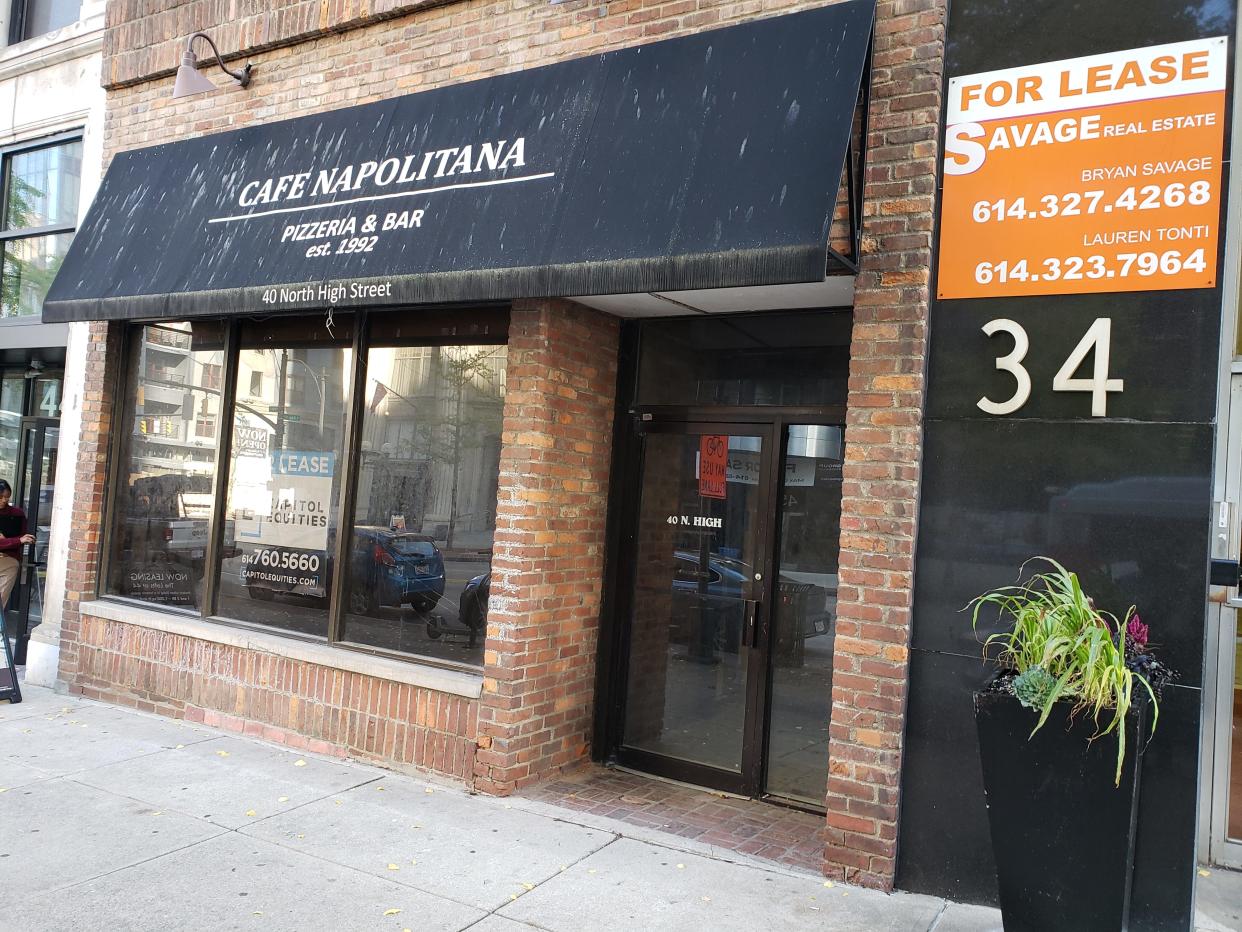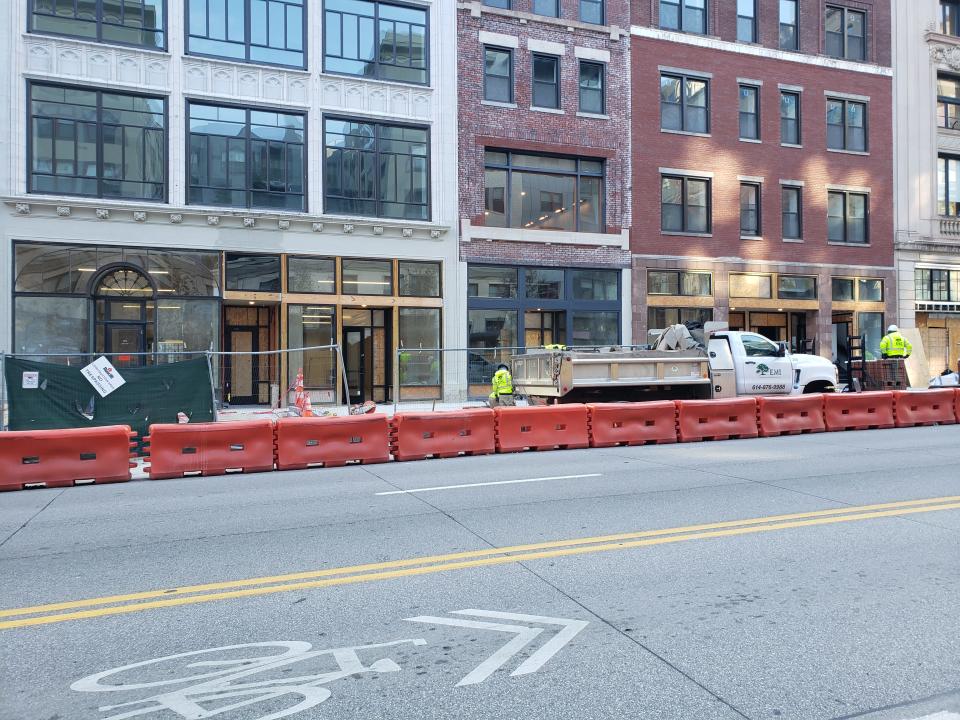Columbus launches program to help fill empty Downtown retail spaces

Columbus officials launched a program Tuesday designed to help fill empty Downtown retail spaces with small and women- and minority-owned businesses.
The program, called Ground Floor Growth, would provide money for rent and building renovation, along with other support, to bring life back to dormant space in Downtown's core.
"This is about getting folks to come back Downtown," said Councilmember Nick Bankston, who championed the program. "When Downtown is strong, Columbus is strong."
Bankston and others introduced the program at a Tuesday morning news conference at an empty retail space on East Broad Street, next to the former Tim Horton's restaurant on Broad and High, which also stands empty.
Downtown has long struggled to keep and attract retail tenants, but COVID-19 greatly magnified those struggles, as it did in downtowns across the nation. In 2020, 19 retailers (including restaurants) closed, while eight opened, according to the State of Downtown report prepared by Capital Crossroads & Discovery Special Improvement Districts.
Since then, more new retailers have opened (38) than have closed (29), but the retail environment remains challenged, in large part because many former Downtown office workers continue to work from home. In addition to Tim Horton's, other major retailers to pull up stakes Downtown include CVS pharmacy on South High Street and Pub Mahone restaurant on East Gay Street, which became Esco Restaurant & Tapas.
More: New Downtown Columbus strategic plan looks for 40,000 residents, 120,000 workers by 2040
About 126,000 square feet of retail space, or 12.6% of all inventory, remains vacant throughout Downtown, according to data from the commercial real estate firm NAI Ohio Equities. That's the highest amount of empty space since 2014, and about three times the amount in 2018, 2019 and 2020, before COVID sent thousands of Downtown workers home.
"The biggest factor is daytime and nighttime population not being high enough," said NAI Managing Director Matt Gregory, who noted that many high-rise owners already subsidize ground-floor retail tenants. "We need more workers during day and more residents for night and weekend."

In addition to the many retail spaces that stand empty Downtown, several new buildings are opening with ground-floor retail space that needs filled.
"We know Downtown is coming back, but it's coming back differently," said Amy Taylor, president of the Columbus Downtown Development Corp., a partner in the program. "One area we have to grow is our first-floor experience."
The Ground Floor Growth program will help small and women- and minority-owned businesses in three main ways:
Rent assistance: Up to 50% of rent the first year, 30% the second and 10% the third. The city has budgeted $500,000 for the assistance. The program will be managed by the Columbus Downtown Development Corp., which will hold the leases and sublet to the tenants.
Building improvements: $20 to $40 a square foot to improve retail space. The city has budgeted $1 million for the improvements.
Business advice: The city has entered into a $150,000 contract with the Columbus Empowerment Center to provide technical assistance to retail businesses.
The city hopes to help 10 businesses with the program, which will target several blocks north of the Statehouse, bordered by Broad Street on the south, Long Street on the north, Front Street on the west and Fourth Street on the east.
The program is open to any existing businesses looking to expand or businesses looking for their first brick-and-mortar space, but the city hopes "a lot of minority- and women-owned businesses will take advantage of the program," said Nya Hairston, deputy communications director for City Council. Applications for Ground Floor Growth opened Tuesday and will remain open through Nov. 15 at the city's small business hub.
"This is exciting," said Matt Ungar, a former business owner who has lived Downtown for 19 years. "Small businesses need all the help they can get."
jweiker@dispatch.com
@JimWeiker
This article originally appeared on The Columbus Dispatch: How does new Columbus program to help fill Downtown retail spaces work?

